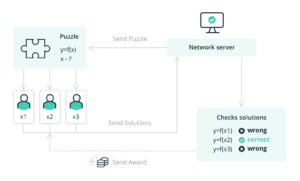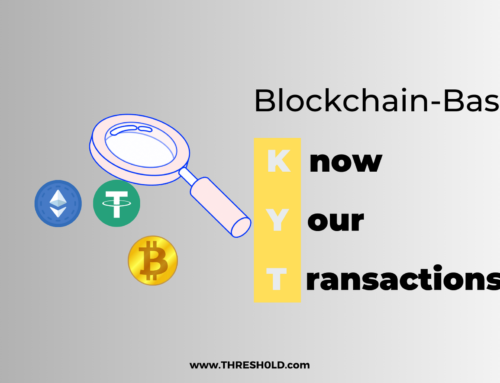 Blockchain and quantum computing – two cutting-edge technological sectors – have been regarded as the future of computing. The blockchain today has more practical applications in cryptocurrency and digital assets, but that has not hindered quantum computing from growing frighteningly. As a result, quantum computers are a possible threat to current blockchains, and the threat has become a source of concern within crypto communities. For example, according to a study by Deloitte, approximately one-quarter of the Bitcoin blockchain is vulnerable to attacks from quantum computers.
Blockchain and quantum computing – two cutting-edge technological sectors – have been regarded as the future of computing. The blockchain today has more practical applications in cryptocurrency and digital assets, but that has not hindered quantum computing from growing frighteningly. As a result, quantum computers are a possible threat to current blockchains, and the threat has become a source of concern within crypto communities. For example, according to a study by Deloitte, approximately one-quarter of the Bitcoin blockchain is vulnerable to attacks from quantum computers.
In this blog post, we will look at quantum computers, how they threaten existing Proof-of-Work blockchains and how blockchains can evade these threats.
What is Quantum computing?
Quantum computing is an advanced type of computing technology that employs the laws of quantum physics to solve logic problems that either require exponential computing power or are too complex for existing supercomputers to solve. Let’s first look at how standard computers process data to understand better how quantum computers work. Classical computers process all bits of inputted data in one of two memory states – 0 or 1. In programming circles, the states are called binary codes.
By computing in 0s and 1s, classical computers can solve and store complex data. However, their processing capabilities are limited as they can only simultaneously compute a piece of data. In contrast, quantum computers can run multiple computations simultaneously. This feature is possible because they use quantum bits (aka qubits), representing data in three states: 0,1, or both.
This data representation method is called a superposition and it is the driving force behind quantum computers’ exponential processing speed. So, by accepting different states and variables, quantum computers minimize the potential of arriving at wrong answers while providing the correct answer(s) for larger computational problems. Unfortunately, this accuracy and speed threaten existing blockchains, especially proof of work blockchains which we shall explore further down.
How do they threaten PoW Blockchains?
Bitcoin is the largest blockchain and utilizes the PoW consensus algorithm as a security measure to validate transactions in real-time. PoW functions by allowing network nodes to solve complex math puzzles for the right to process and add transactions to the blockchain. Each computation requires a significant amount of energy and specialized computing hardware called Application-Specific Integrated Circuit (ASIC) miners, which disincentives nodes from going rogue and processing invalid transactions. Quantum computing can potentially compute faster than ASIC miners. However, that threat has been considered minor because of their significantly shorter clock time than ASIC miners.
Bitcoin uses ECDSA, a digital signing algorithm that uses public/private keys derived from elliptic curve cryptography (ECC). Quantum computers run on Shor’s algorithm, which theoretically could determine the private key associated with a public key concealed by EC cryptography. However, research has shown that a quantum computer could take a few hours to run Shor’s algorithm successfully. Another article published by TechRadar in February 2022 predicts that a quantum computer would need about 13 million qubits to break the SHA-256 cryptographic algorithm securing Bitcoin in 24 hours.

Image Source: Ledger
While this threat over the blockchain looms, it is important to realize that mainstream quantum computers do not yet possess the ability to do this. For context, IBM’s superconducting quantum computer currently has a 127-qubit processor. Considerable quantum development must happen before quantum computers can attempt such attacks. Additionally, quantum computers generally are very expensive to build, making them unreachable to potential hackers. Note that the quantum computers’ mere ability to process complex bits of data quickly poses little threat to the Bitcoin blockchain itself. However, the rate at which quantum computers are developed raises valid concerns about the security of the blockchain.
What can be done to evade these threats?
A quantum hacker could attack Bitcoin’s digital signature creating malicious transactions in the network. If this happens, Satoshi (Bitcoin’s creator) laid out a plan: to hard fork Bitcoin and replace its current signatures with post-quantum algorithms. Additionally, developers are already implementing quantum-proof signatures like CURL-P, WOTS+, and XMSS to safeguard the blockchain from quantum hacking. Now, they must keep up with the advancements in quantum computing, while protocols should migrate to such signatures to eliminate potential threats.
Can quantum computing enhance the blockchains of the future?
The cryptocurrency market’s focus is often on the threat from quantum computers. Besides this, we should also focus on how quantum computing and technology can enhance the blockchain’s security. The blockchain faces powerful threats every day. By merging it with quantum technology, we can strengthen its security against these threats. Doing this could create more secure and possibly faster blockchains, reducing cybersecurity threats.
About THRESH0LD
THRESH0LD offers a single, simple to integrate API that helps digital asset businesses such as crypto exchanges, payment processors and OTC solutions cut tx fees, save time and enhance security.
THRESH0LD currently supports 43 blockchain protocols and with our DeFiBridge feature, you can enable swaps across many thousands of assets.
Found this piece interesting? Check out our other blog posts.




